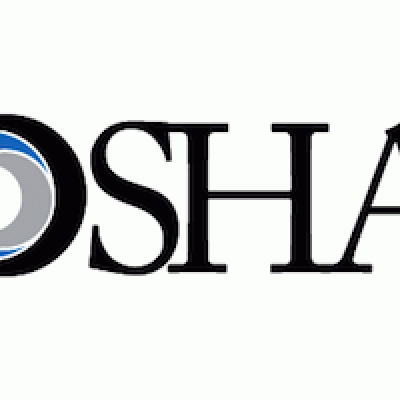On November 14, 2000, OSHA issued a final rule establishing a National Ergonomics Program Standard. The Standard takes effect on January 16, 2001. Unless the mandatory compliance date is changed by the incoming administration, all employers, except those subject to OSHA’s agriculture, construction, maritime or railroad standards, must comply with the new National Ergonomics Program Standard by October 14, 2001. Because of the amount of work that may be required to comply with the National Ergonomics Program Standard, it is strongly recommended that employers take steps to comply with the Standard prior to October, 2001.
This article will explain OSHA’s reasoning for adopting the Standard, the expected cost of compliance, compare the Cal OSHA Standard to the national OSHA Standard, and identify as of yet unanswered questions relating to implementation of the National Ergonomics Program Standard. What an employer must do to comply with the new Standard will be the subject of an article published in the next edition of The Advisor.
Cost Savings?
As you have probably heard, the new Standard will impact most of America’s workers. OSHA believes that the standard will affect approximately 6.1 million work sites and over 102 million employees. OSHA hopes the Standard will prevent 4.6 million work related musculoskeletal disorders (“MSDs”) by 2011. The cost of complying with the new Standard will not be cheap. OSHA estimates that the annual cost of compliance will be $9.1 billion or $250 per employee. However, OSHA estimates that a typical MSD injury costs employers $700 annually arising from reduced productivity, sick time, increased disability insurance premiums, increased worker compensation costs, employee accommodation pursuant to the American with Disabilities Act, costs associated with temporary replacement worker, and costs associated with high employee turnover rates. OSHA predicts that employers will save approximately $450 per employee per year once the new Standard has been implemented. It is likely that the cost of compliance will be higher during the first several years as employers will have to make a larger investment in ergonomic equipment then in subsequent years. Private consultants estimate that the cost of compliance could be as high as $800 per employee during the first two years of compliance.
Reconciling The Cal OSHA Standard And The National Ergonomics Program Standard
Cal OSHA, the state regulatory body, has long had an ergonomic program standard. The California Standard, 8 CCR § 5110, requires employers with ten or more employees to establish and implement an ergonomic program if two or more employees report “objectively identified and diagnosed” repetitive motion injuries which are “predominantly caused” (50% or more) by a repetitive “job, process, or operation of identical work activity” as made by a licensed physician [8 CCR § 5110(a)(3)]. The new Federal Ergonomic Program Standard does not replace the existing state standard. Employer’s must comply with both standards, implementing an ergonomic correction and providing training whenever called for by either law.
The most significant difference between the California and national Standards is that the national Standard applies to all employers no matter their size (except for employees subject to OSHA’s agricultural, construction, maritime and railroad standards) and requires that employers take significant action when any employee suffers from a musculoskeletal disorder (“MSD”) regardless of whether the actual cause of the injury is work related or an activity performed solely outside of the work environment.
The National Standard also uses an “action trigger” to identify jobs that contain risk factors of sufficient magnitude, duration, or intensity to warrant further examination by the employer. The intent of the action trigger is to act as a screen. When an employee reports a MSD to his/her employer, the employer must determine whether the MSD is a MSD incident as defined by the national Standard. A MSD incident is defined by the national Standard as a MSD that results in days away from work, restricted work, medical treatment beyond first aid, or MSD symptoms or signs that persist for seven or more consecutive days. Once a MSD has been classified as a MSD incident, a call made by the employer, and, therefore, an area of potential liability for the employer, the employer must determine whether the employee’s job has risk factors that meet the action trigger. The national Standard contains a check list, or “Basic Screening Tool” that identifies the five (5) risk factors which include repetition, awkward posture, force, vibration, and contact stress. Again, it is the employer who determines if the job involves MSD risk factors. If the risk factors in the employee’s job do not exceed the action trigger, the employer does not need to implement an ergonomics program for that job. If, however, an employee reports a MSD incident, and the employee’s job satisfies the action trigger test, the employer must develop and implement a full ergonomics program for that specific job and other like jobs.
Ergonomic programs that comply with the national Standard must provide for (a) management leadership and employee participation, (b) job hazard analysis and control, (c) training, (d) MSD management, and (e) ongoing program evaluation. The national Standard also requires employers to teach employees about the signs and symptoms of MSDs, track complaints of MSD signs and/or symptoms for three years if the employer employs eleven (11) or more full or part time employees and report employee complaints to OSHA. The information collection requirements of the national Standard will not go into effect until the Department of Labor publishes in the Federal Register the control numbers assigned by the Office of Management and Budget. It is our understanding that the reporting provisions will not go into effect until June, 2001 and while it is true that the Republican Congress and President may modify or refuse to provide OSHA with funds for enforcement, employers will be liable for failing to comply with the new regulation.
What Remains Unclear.
As with any new law, there will be a lot of questions relating to implementation of the National Ergonomics Program Standard which ultimately will be decided by Courts. As an OSHA regulation, employers are subject to fines for failure to comply. However, the question of whether employers and/or supervisory employees may be found civilly liable in addition to fines imposed by OSHA is unclear and will have to be determined by the Courts. Some of the areas of potential liability are as follows:
- Does the new Ergonomics Standard create personal liability for managers, supervisors and employees administrating an ergonomics program?
- Will individual managers and supervisors be found personally liable for failing to recognize a MSD incident?
- Will individual managers and supervisors be found personally liable for failing to provide an ergonomic correction when called for by the national Standard?
- Will managers and/or supervisors be personally liable for discouraging employees from participating in an ergonomic program or failing to review their ergonomics program?
While these and many other questions remain unanswered, employers and Human Resource experts are advised to act cautiously, assuming that the potential for liability exists.
Recommendations
While many questions remain concerning the new national Standard, it is clear that ergonomics and musculoskeletal disorders (MSDs) are terms that will rapidly enter the vocabulary of employers, Human Resources professionals, and employees. Employers should take the following steps to prepare for October:
- Employers should educate themselves by attending an ergonomic training class. The Employer’s Group of Orange County has such a class scheduled for April, 2001.
- Employers will need to revise their employee handbooks by adding an acknowledgment form indicating that each employer has provided the training mandated by the national Standard, that they have received a form with which they can report a MSD sign and/or symptom, and to whom they should report a MSD sign or symptom. Employers should place a copy of the acknowledgment form in the employee’s employment file.
- Employer’s should also determine how they plan to address employee complaints once they are received.
- Employers should also maintain a separate ergonomic file for reports of MSDs divided by work groups.
In the next article to be published in the next edition of the Advisor, we will discuss what employers must do to comply with the national Standard as well as outline the costs associated with compliance.
* Joy Boese, MS, BA is the President of E3 Consulting Corporation, an ergonomic consulting firm located in Los Angeles, California.
* Douglas M. Wade, Esq. is an Associate in the Los Angeles Office of Kelley Drye & Warren, L.L.P. and specializes in employment and business law.




